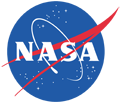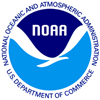FROZEN: A Spherical Movie About the Cryosphere
NASA's home for spherical films on Magic Planet. Download the Magic Planet-ready movie file here.
Released on March 27, 2009, FROZEN is NASA's second major production for the Science On a Sphere platform, a novel cinema-in-the-round technology developed by the Space Agency's sibling NOAA. Viewers see the Earth suspended in darkness as if it were floating in space. Moving across the planet's face, viewers see the undulating wisps of clouds, the ephemeral sweep of fallen snow, the churning crash of shifting ice, and more.
FROZEN brings the Earth alive. Turning in space, the sphere becomes a portal onto a virtual planet, complete with churning, swirling depictions of huge natural forces moving below. FROZEN features the global cryosphere, those places on Earth where the temperature doesn't generally rise above water's freezing point. As one of the most directly observable climate gauges, the changing cryosphere serves as a proxy for larger themes.
But just as thrilling as this unusual—and unusually realistic—look at the planet's structure and behavior is the sheer fun and fascination of looking at a spherically shaped movie. FROZEN bends the rules of cinema, revealing new ways to tell exciting, valuable stories of all kinds. The movie may be FROZEN, but the experience itself rockets along.
Designed exclusively for playback on spherical projections surfaces, FROZEN introduces mainstream audiences to the cryosphere—places on Earth where the temperatures don't rise above water's freezing point. The following trailer showcases some of the visual themes contained in the movie and points to the film's main website.
This film has been prepared exclusively for playback on spherical projections systems. It will not appear in its proper format on a traditional computer or television screen. If you are interested in dowloading the complete final movie file for spherical playback, please visit :
Credits
Written, Produced and Directed by
Michael Starobin and Horace Mitchell
Based on a presentation by
Dr. Robert Bindschadler/GSFC
Edited by
Victoria Weeks
Narrated by
Craig Sechler
Music by
Andre Gribou
Script Development Team
Michael Starobin
Horace Mitchell
Victoria Weeks
Greg Shirah
Cindy Starr
The Scientific Visualization Studio/NASA GSFC
Director of Data Visualization
Horace Mitchell
Visualization Team
Cindy Starr
Lori Perkins
Tom Bridgman
Greg Shirah
Software Development
Greg Shirah
Eric Sokolowsky
Animation
Ivy Flores
Andrej Bevec
Walt Feimer
Set Construction and Practical Effects
Chris Meaney
Stop Action Photography
Pat Izzo
Infrared Videography
Ed Weibe
Videography
Chris Smith
Victoria Weeks
Studio Crew
Shane Keating
Richard Melnick
Jennifer Lentz
Tatyana Pokrovskaya
Sound Design
Michael Starobin
Audio Engineering and Assistant to the Composer
Eric Arvai
Recording Engineer
Mike Velle
Account Management
Mike Velle
IT Management
Pankaj Jaiswal
Stuart Snodgrass
Jim Williams
Science On a Sphere Project Liaison
Maurice Henderson
Photographic Research
Eric Erbe
Production Photography
Debora McCallum
Pat Izzo
Voice Casting
Sandy Stern Casting, LLC
Cast
Mara Bayewitz
Chris Meaney
Andy Freeberg
Helen-Nicole Kostis
Scientific Consultants
Dr. Bob Bindschadler, GSFC
Dr. Waleed Abdalati, CIRES/CSES
Dr. Thorsten Markus, GSFC
Dr. Richard S. Williams, Jr., USGS
Antarctica Video
PolarPalooza/Passport to Knowledge
Ilulissat Glacier Sequence
Jason Amundson, University of Alaska Fairbanks
Glacier Images provided by
Mike Embree, The National Science Foundation
W. T. Pfeffer, Institute of Arctic and Alpine Research, University of Colorado
Dr. Roland Warner, Antarctic Climate and Ecosystems Cooperative Research Centre and Australian Antarctic Division
Permafrost Images provided by
F.T. Eyre, U.S. Army Corps of Engineers
Marilyn Aber, U.S. Army Corps of Engineers
Michael J. Coffey, Alaska Department of Transportation and Public Facilities
Data Sources
Blue Marble Next Generation Seasonal Landcover Reto Stockli (NASA/GSFC)
City lights -- Image and Data processing by NOAA's National Geophysical Data Center from DMSP data collected by the US Air Force Weather Agency.
Circum-Arctic map of permafrost and ground-ice conditions: National Snow and Ice Data Center/World Data Center for Glaciology
Landsat Image Mosaic of Antarctica: The U.S. Geological Survey (USGS), the British Antarctic Survey (BAS), and the National Aeronautics and Space Administration (NASA), with funding from The National Science Foundation (NSF)
GLIMS glacier database Armstrong, R., B. Raup, S.J.S. Khalsa, R. Barry, J. Kargel, C. Helm, and H. Kieffer, National Snow and Ice Data Center
World glacier inventory: World Glacier Monitoring Service and National Snow and Ice Data Center/World Data Center for Glaciology
West Greenland Glacier Inventory 1992: Andreas Peter Ahlstrøm, Department of Quaternary Geology, Geological Survey of Denmark and Greenland, Copenhagen, Denmark
Groundwater Resources of the World: BGR Hannover / UNESCO Paris
2008 North American Atlas: Government of Canada, Natural Resources Canada, Canada Centre for Remote Sensing
The Antarctic Digital Database: copyright © 1993-2006 Scientific Committee on Antarctic Research <br/
Additional Thanks
Anker Weidick, Geological Survey of Denmark
Richard S. Williams, Jr., United States Geological Survey
Charles Swithinbank, British Antarctic Survey
The National Snow and Ice Data Center USGS Washington Water Science Center
Seth White -- www.sethwhite.org
Special thanks to Dr. Ming-Ying Wei, NASA Science Mission Directorate
Executive Producer for Honeywell Technology Solutions
Patrick Kennedy
Executive Producer for NASA Television
GSFC Wade Sisler
Science On a Sphere was Developed by NOAA


FROZEN
Cold matters.
Copyright © 2009 NASA Goddard Space Flight Center All Rights Reserved
-
Animators
- Greg Shirah (NASA/GSFC)
- Cindy Starr (Global Science and Technology, Inc.)
- Lori Perkins (NASA/GSFC)
- Tom Bridgman (Global Science and Technology, Inc.)
- Walt Feimer (HTSI)
- Ivy Flores (IRC/UMBC)
- Andrej Bevec (UMBC)
-
Video editor
- Victoria Weeks (HTSI)
-
Producer
- Michael Starobin (HTSI)
-
Scientists
- Bob Bindschadler (NASA/GSFC)
- Waleed Abdalati (NASA/GSFC)
- Thorsten Markus (NASA/GSFC)
-
Project support
- Shane Keating (Global Science and Technology, Inc.)
- Jennifer Lentz (HTSI)
- Rich Melnick (HTSI)
- Tatyana N. Pokrovskaya (HTSI)
-
Videographers
- Victoria Weeks (HTSI)
- Ed Weibe (HTSI)
- Pat Izzo (TRAX International)
- Chris Smith (HTSI)
-
Writers
- Michael Starobin (HTSI)
- Horace Mitchell (NASA/GSFC)
Release date
This page was originally published on Thursday, March 12, 2009.
This page was last updated on Wednesday, May 3, 2023 at 1:54 PM EDT.
Series
This page can be found in the following series:Datasets used
-
Circum-Arctic Map of Permafrost and Ground-Ice Conditions
ID: 276This dataset can be found at: http://nsidc.org/data/docs/fgdc/ggd318_map_circumarctic/index.html
See all pages that use this dataset -
World Glacier Inventory
ID: 278 -
Earth at Night [DMSP: OLS]
ID: 286 -
Blue Marble Land Cover [Terra and Aqua: MODIS]
ID: 510Credit: The Blue Marble data is courtesy of Reto Stockli (NASA/GSFC).
See all pages that use this dataset -
LIMA (Landsat Image Mosaic of Antarctica) [Landsat-7: ETM+]
ID: 599Mosaicing to avoid clouds produced a high quality, nearly cloud-free benchmark data set of Antarctica for the International Polar Year from images collected primarily during 1999-2003.
This dataset can be found at: http://lima.nasa.gov/
See all pages that use this dataset -
West Greenland Glacier Inventory (Glacier Inventory of West Greenland)
ID: 603This dataset can be found at: http://nsidc.org/data/g01375.html
See all pages that use this dataset -
The Antarctic Digital Database (ADD) (Antarctic Digital Database, The)
ID: 606This dataset can be found at: http://www.add.scar.org:8080/add
See all pages that use this dataset -
GLIMS Glacier Database
ID: 609Global Land Ice Measurements from Space (GLIMS) is an international project with the goal of surveying a majority of the world's estimated 160,000 glaciers. GLIMS uses data collected primarily by the Advanced Spaceborne Thermal Emission and Reflection Radiometer (ASTER) instrument aboard the Terra satellite and the LANDSAT Enhanced Thematic Mapper Plus (ETM+), along with historical observations.
This dataset can be found at: http://nsidc.org/data/nsidc-0272.html
See all pages that use this dataset -
North American Atlas
ID: 610 -
Groundwater Resources of the World
ID: 611
Note: While we identify the data sets used on this page, we do not store any further details, nor the data sets themselves on our site.
